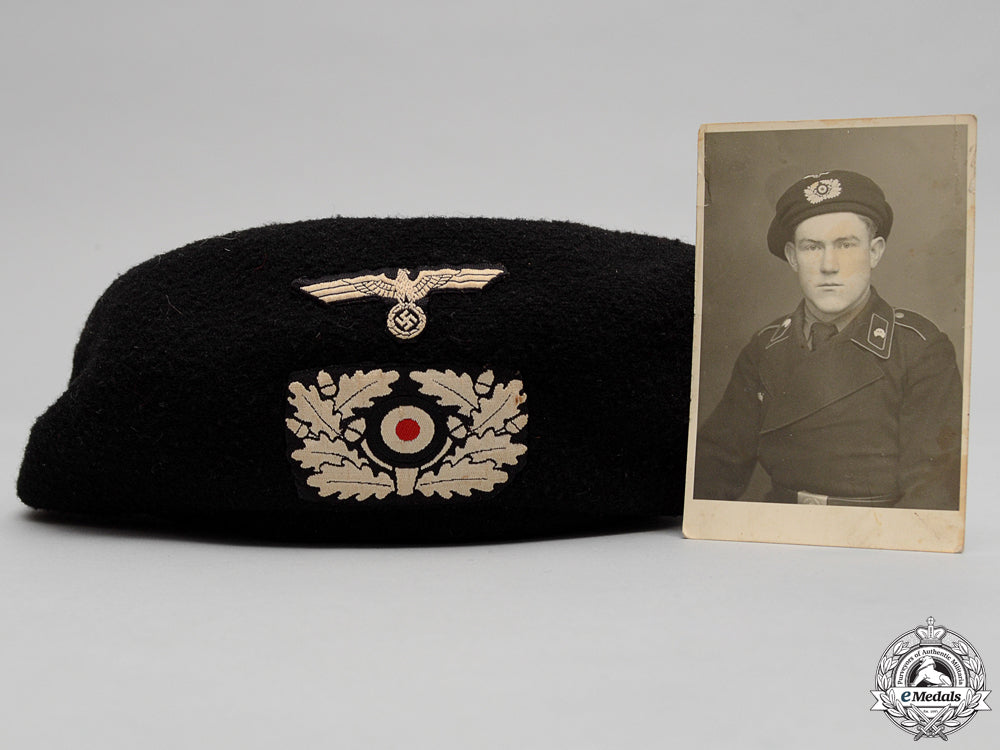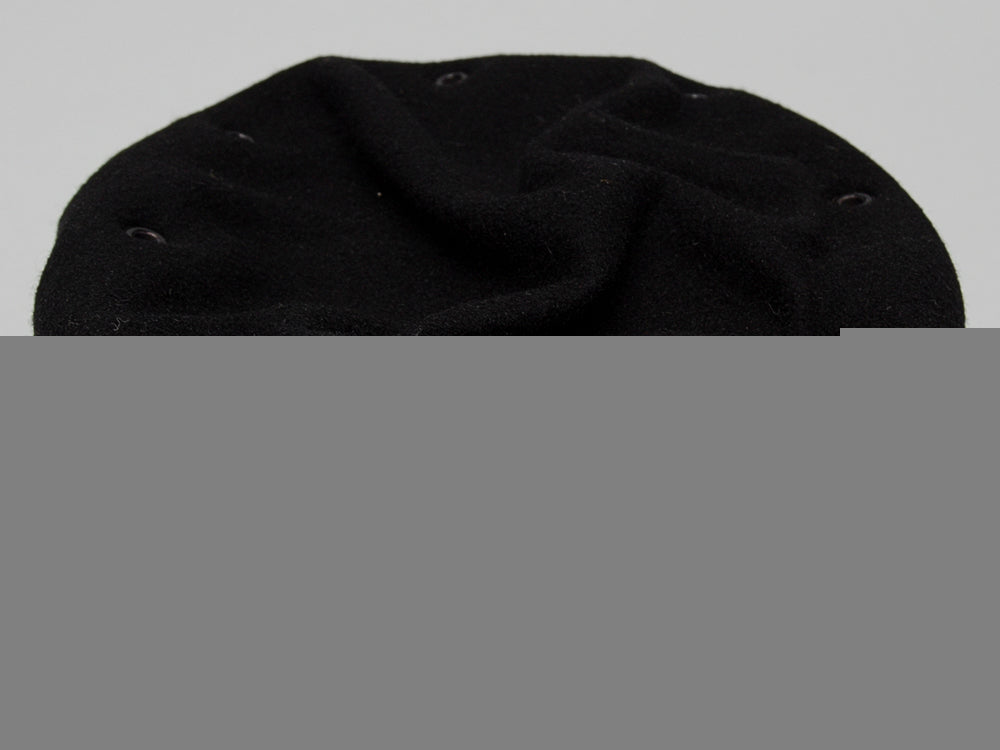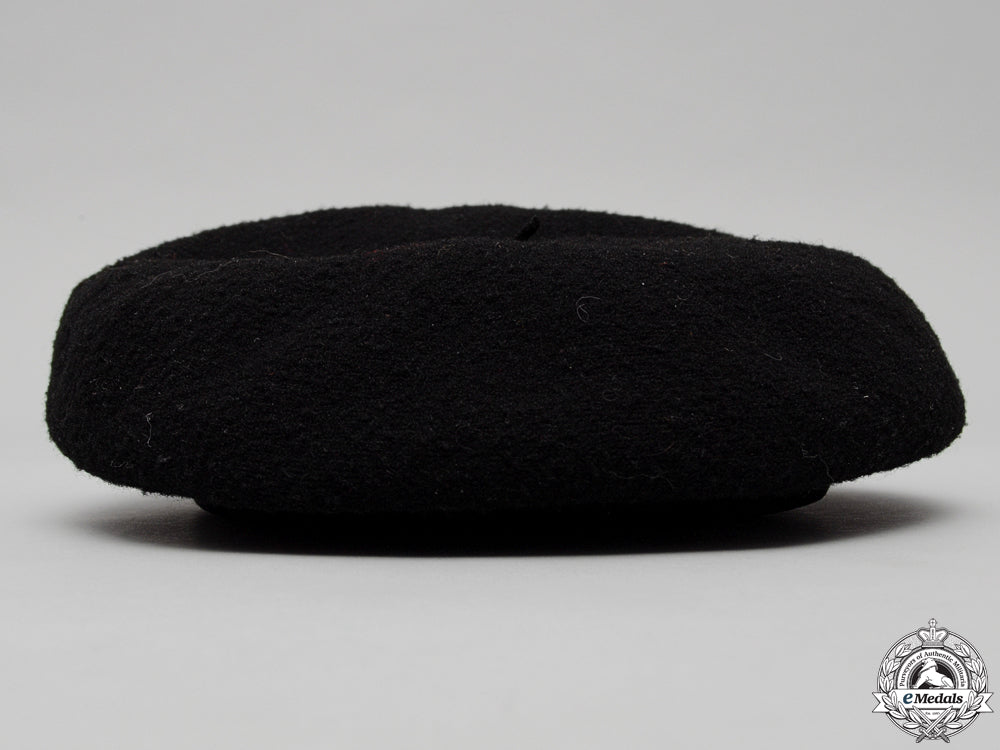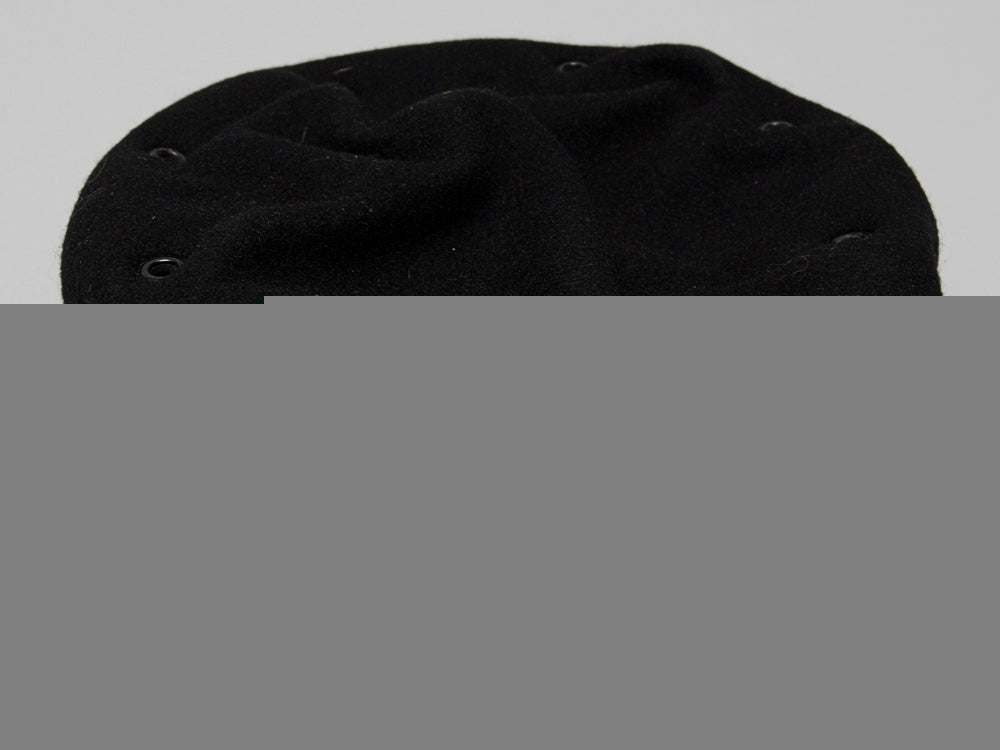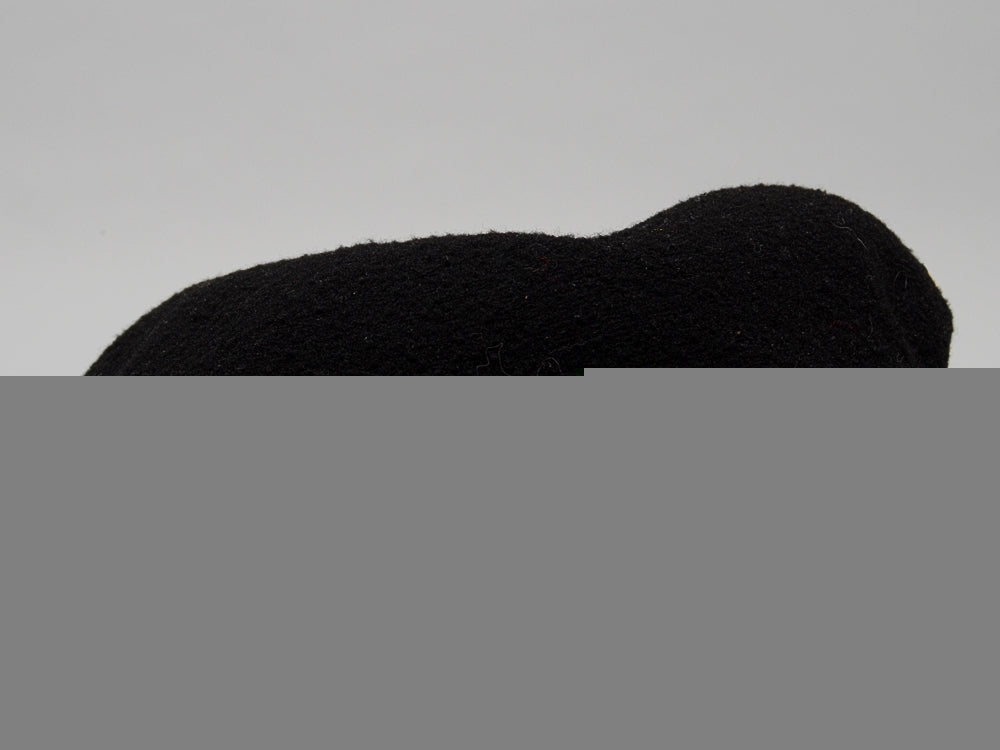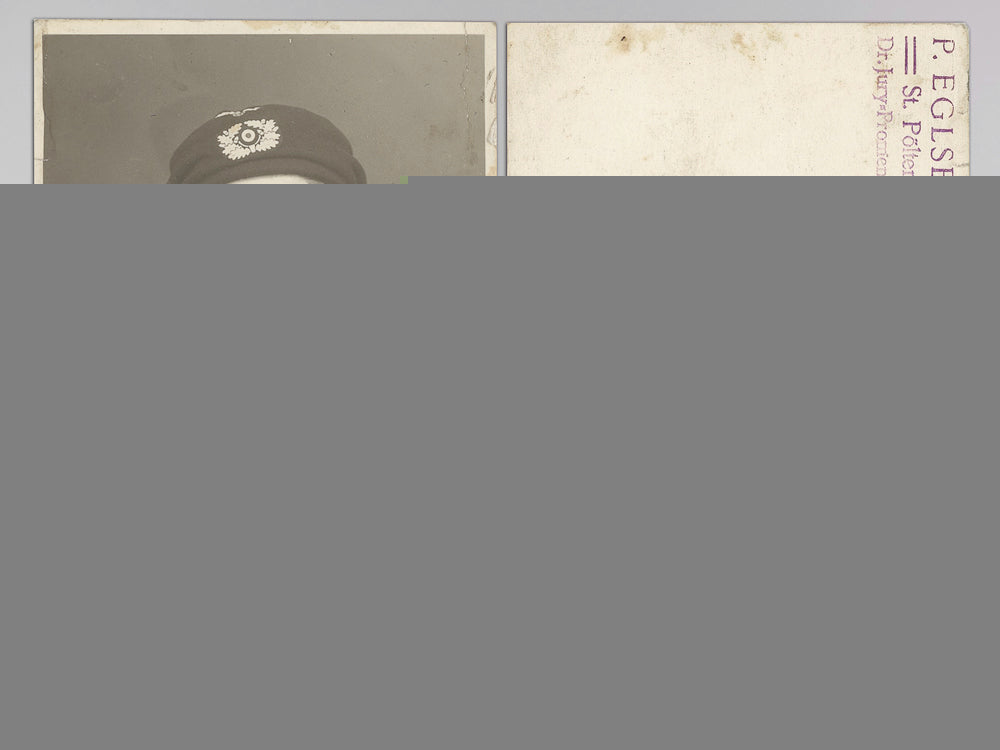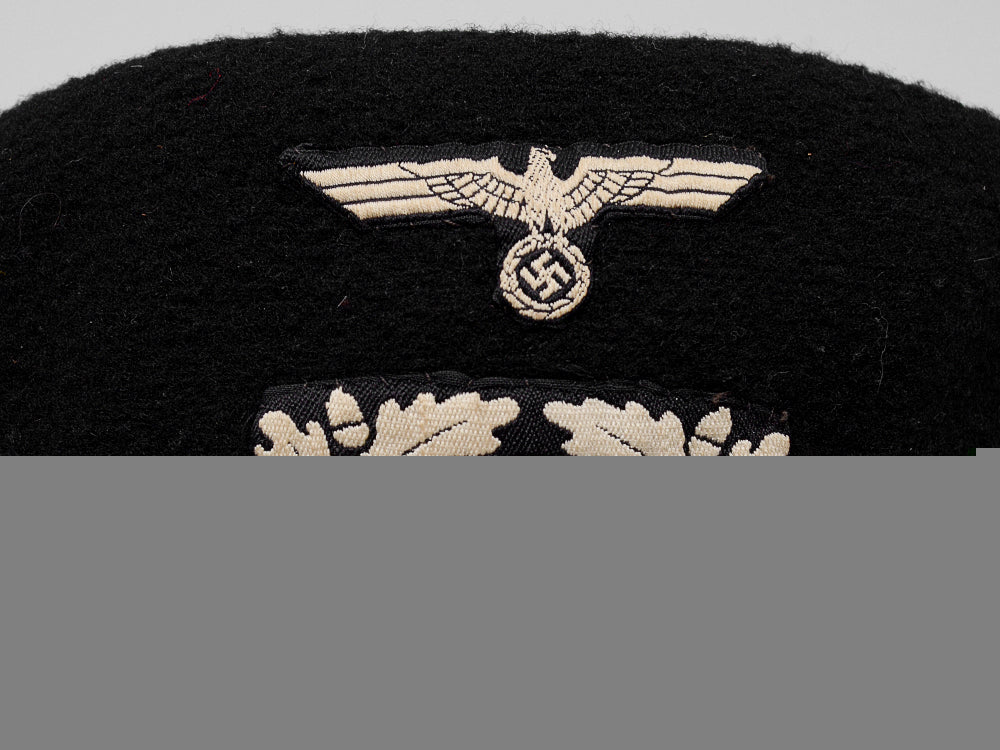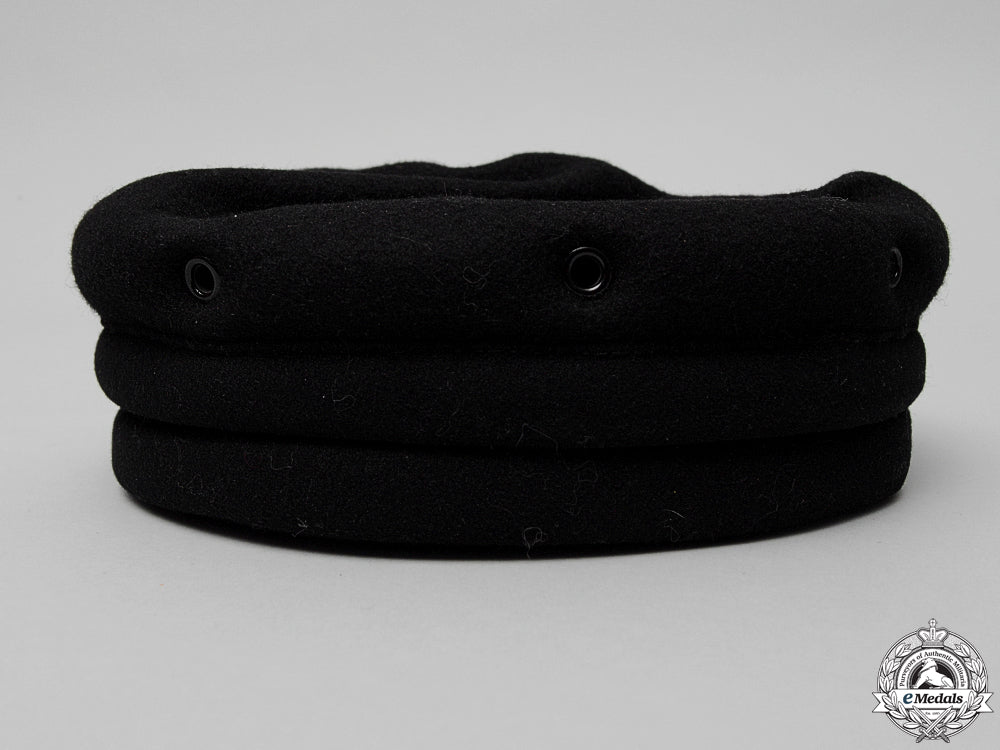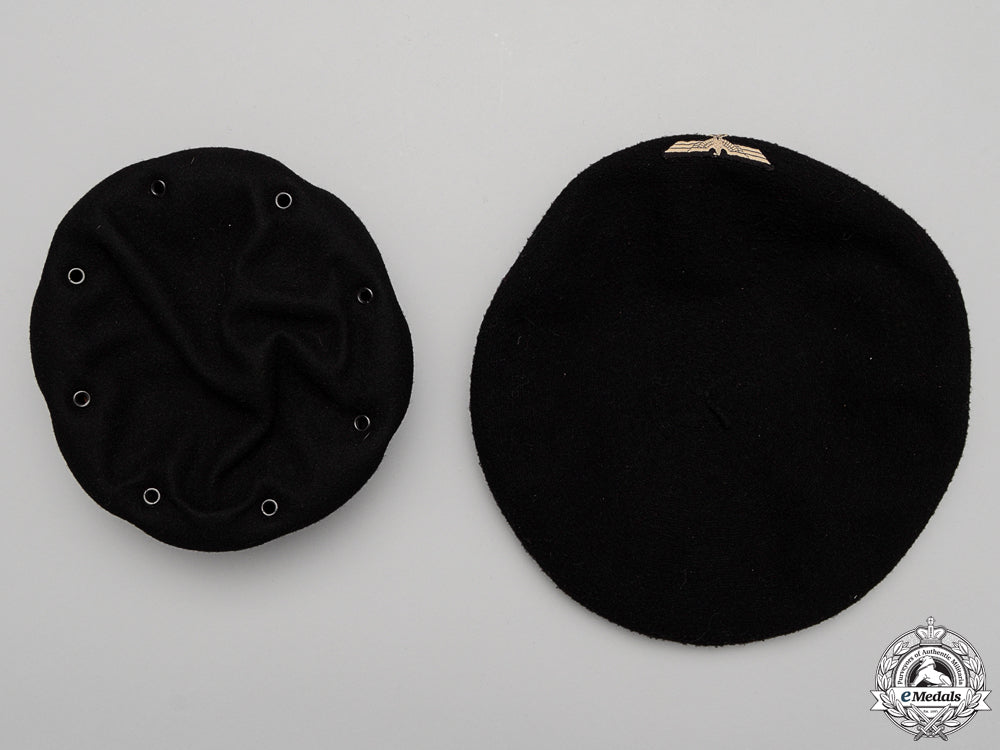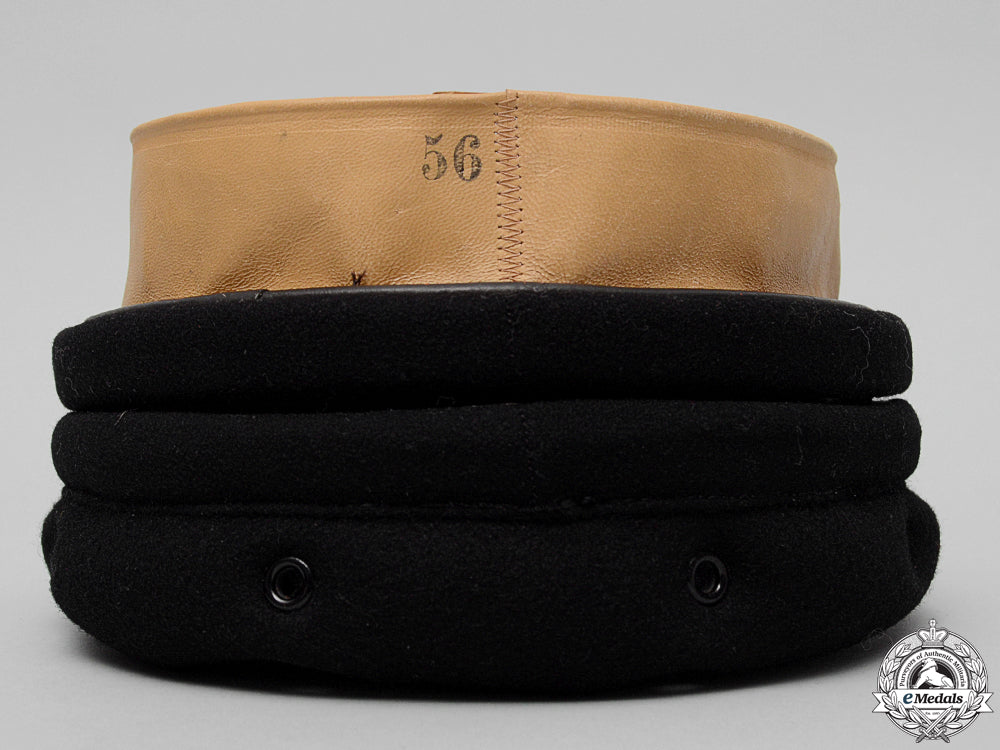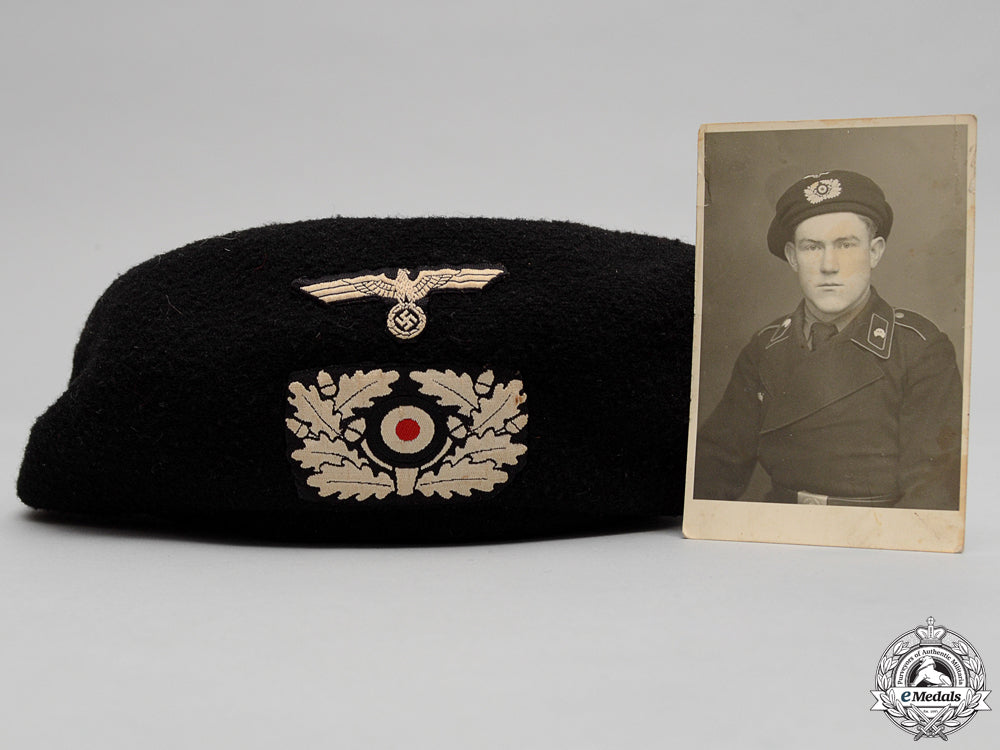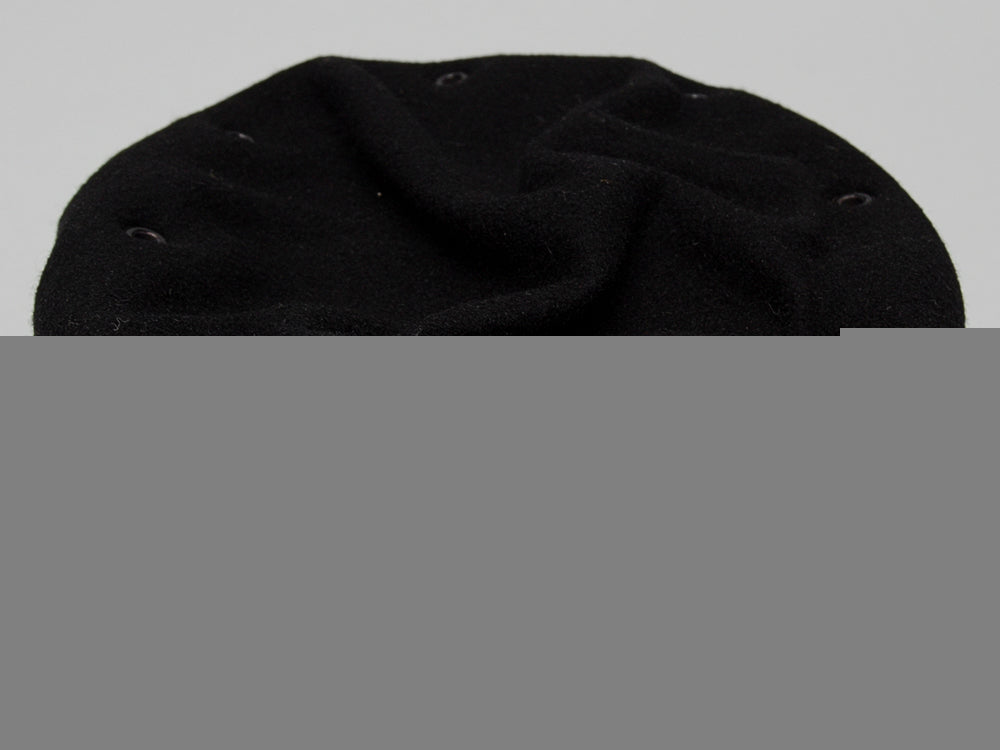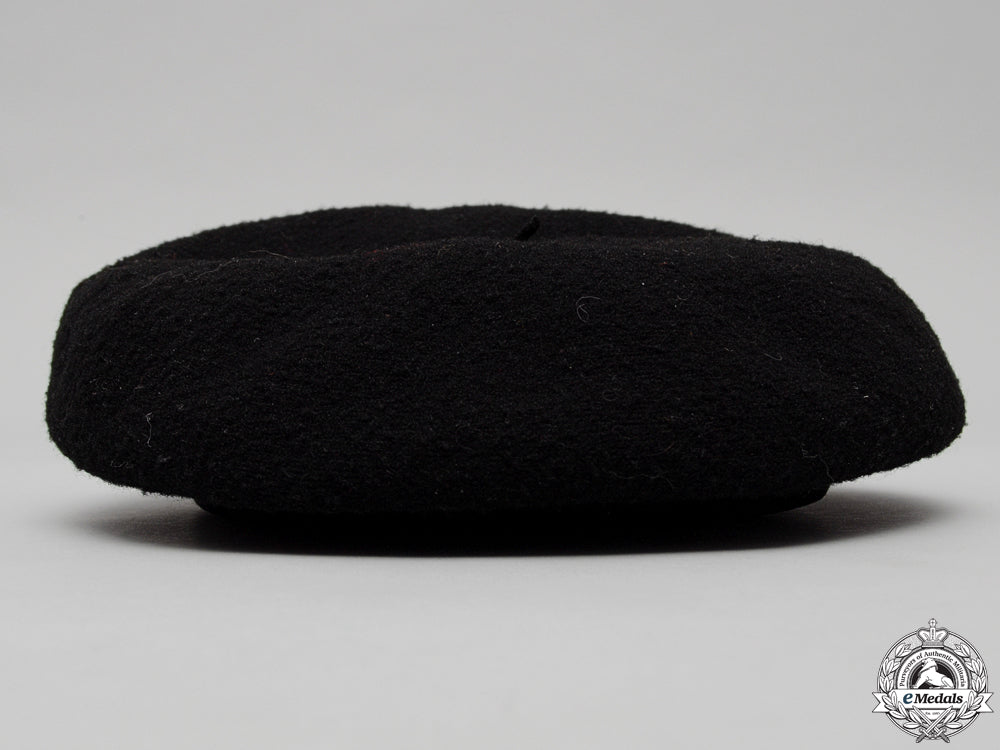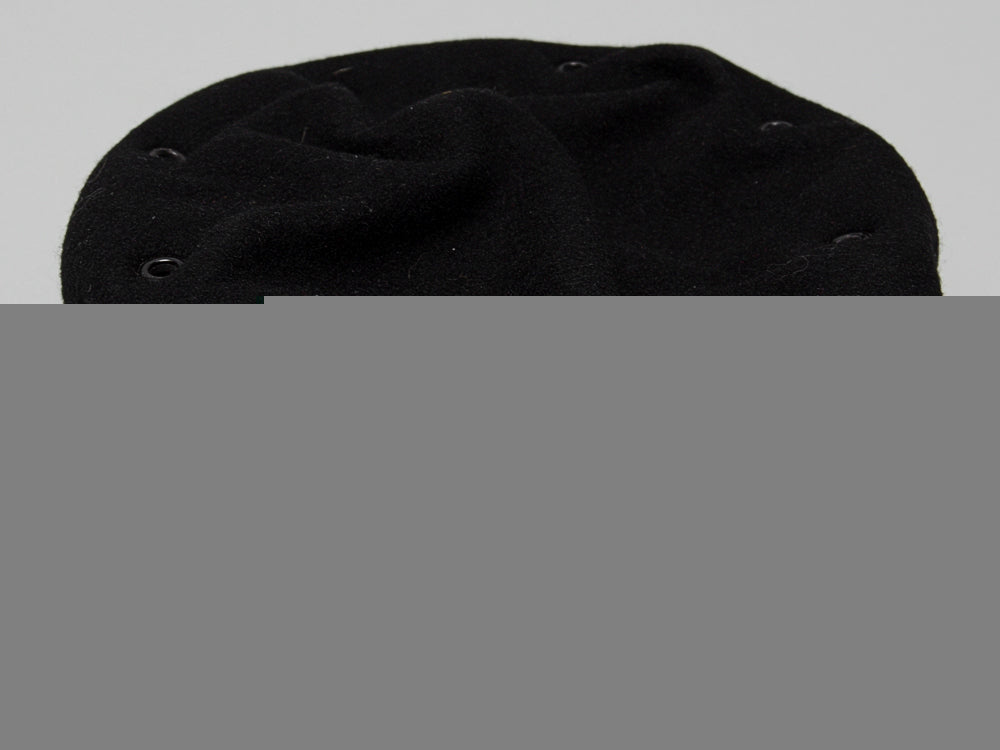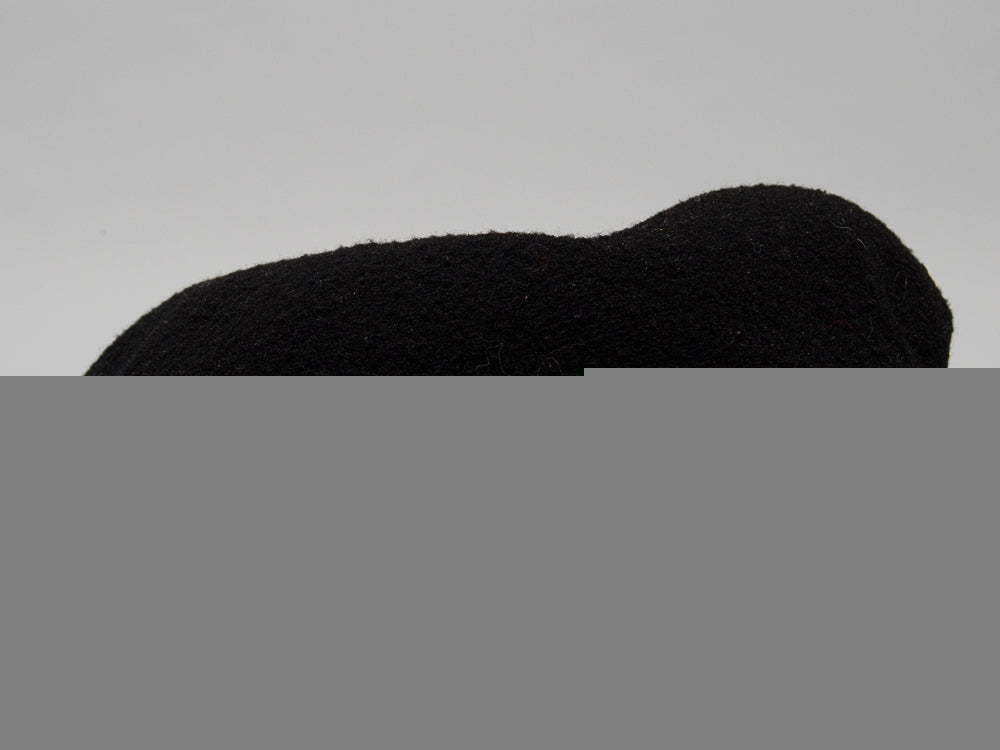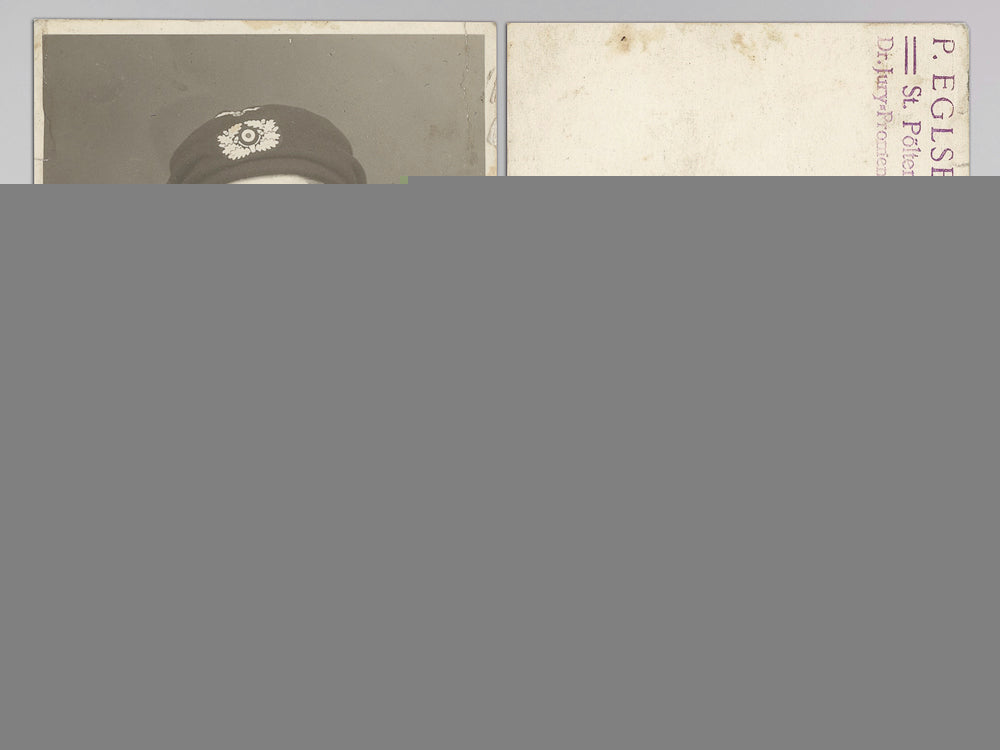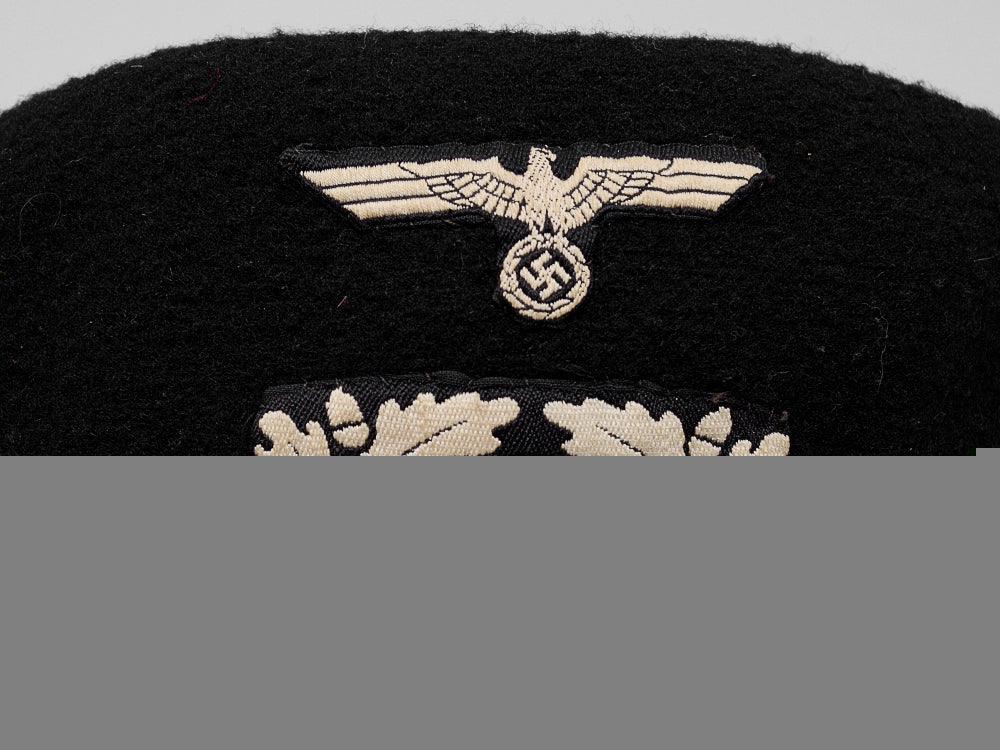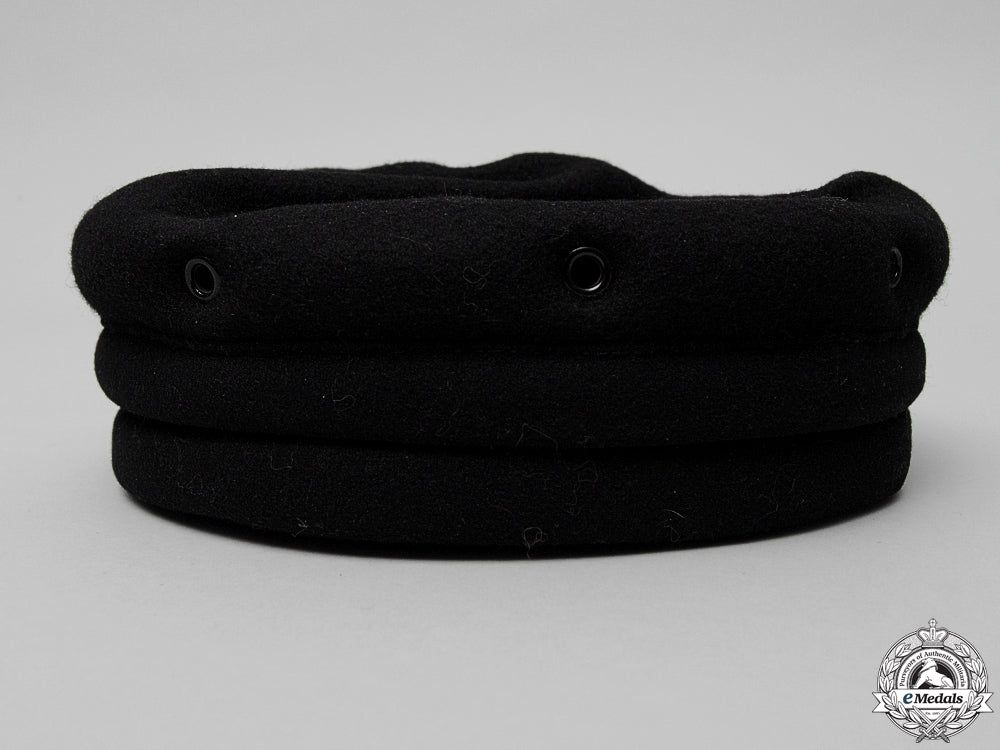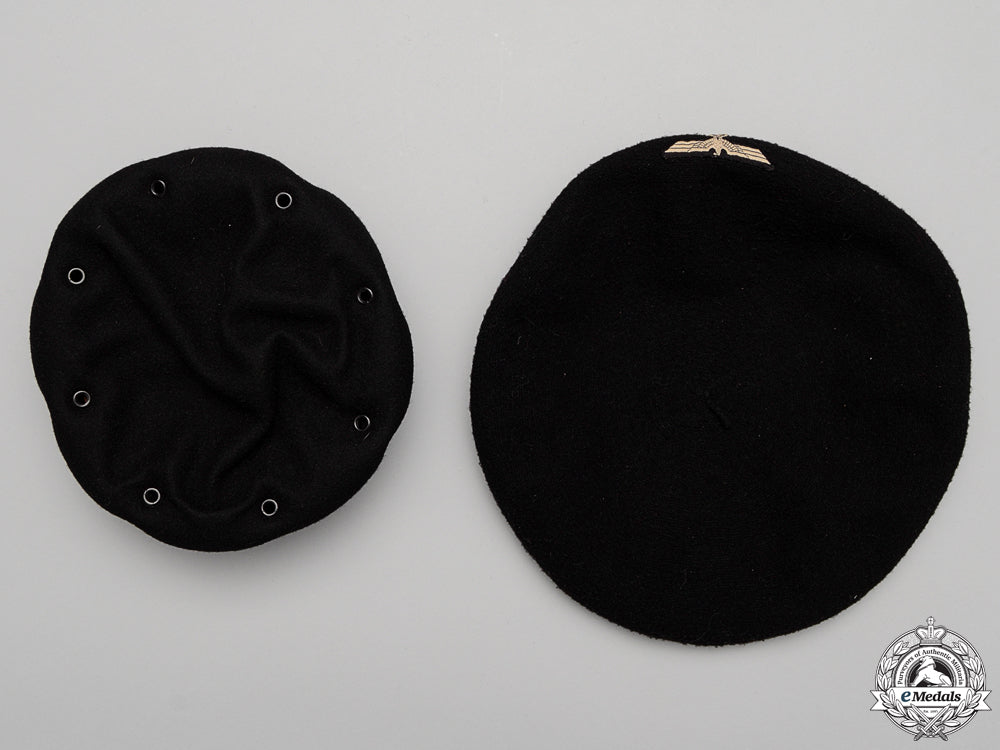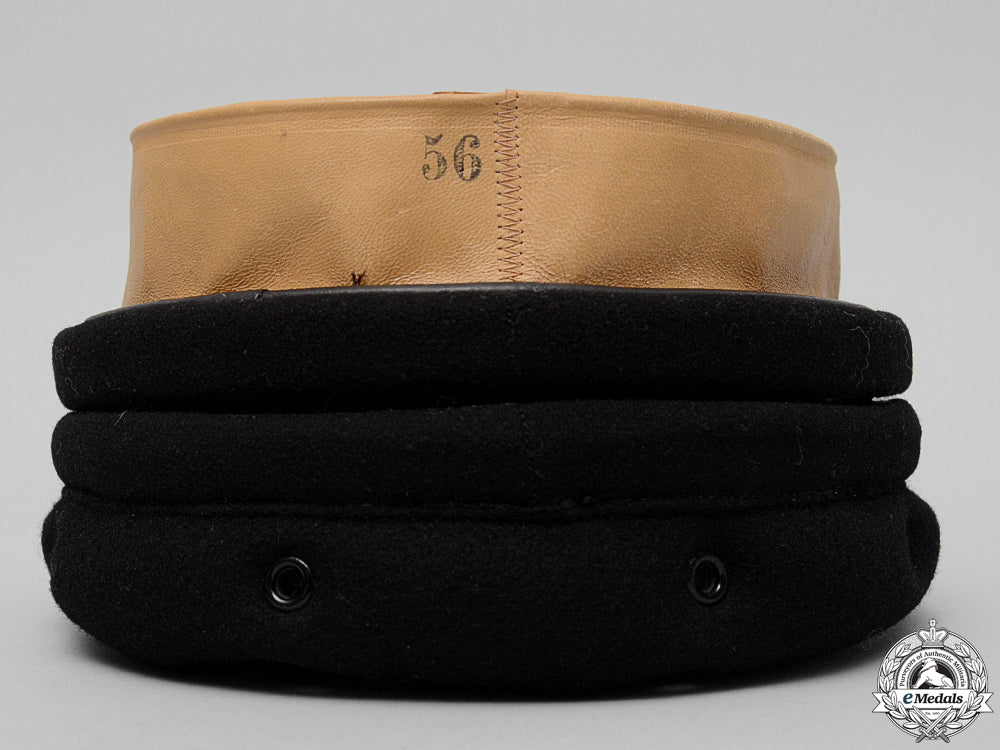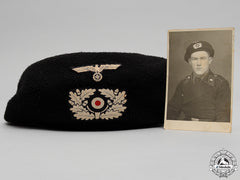
LOADING ...
In response to evolving domestic opinion, eMedals Inc has made the conscious decision to remove the presentation of German Third Reich historical artifacts from our online catalogue. For three decades, eMedals Inc has made an effort to preserve history in all its forms. As historians and researchers, we have managed sensitive articles and materials with the greatest of care and respect for their past and present social context. We acknowledge the growing sentiments put forth by the Canadian public and have taken proactive actions to address this opinion.
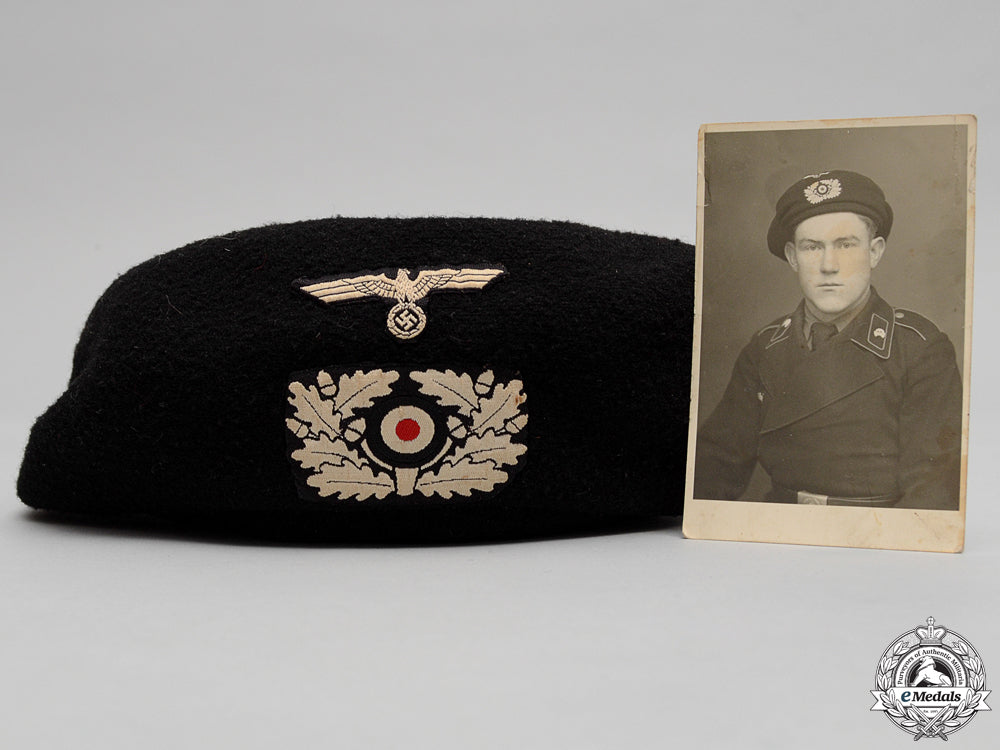
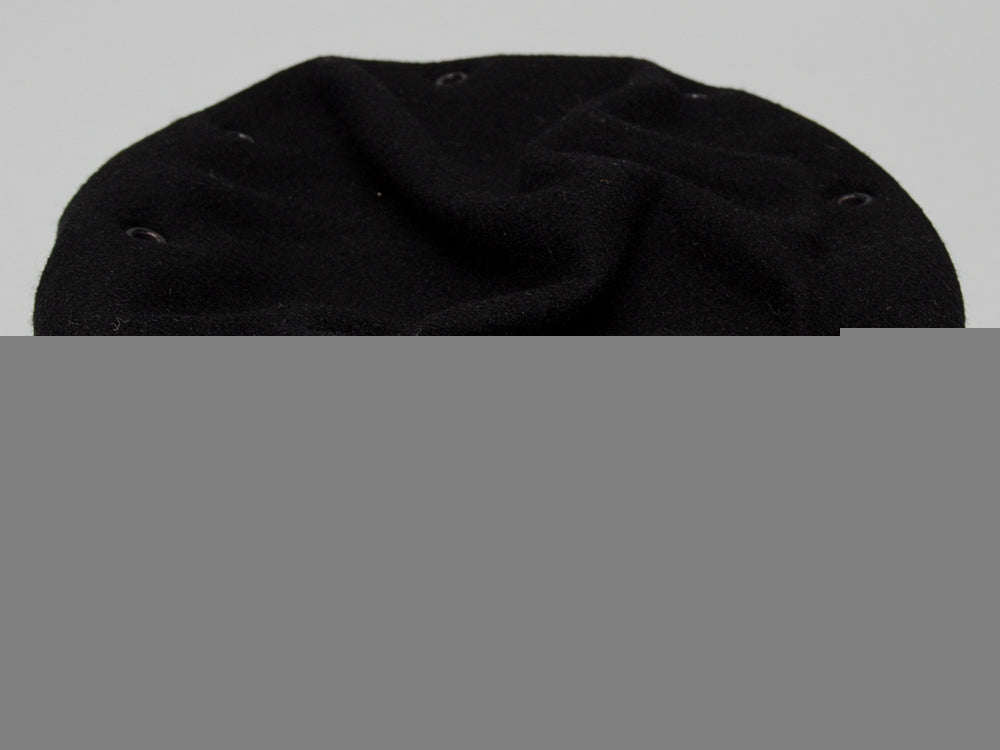
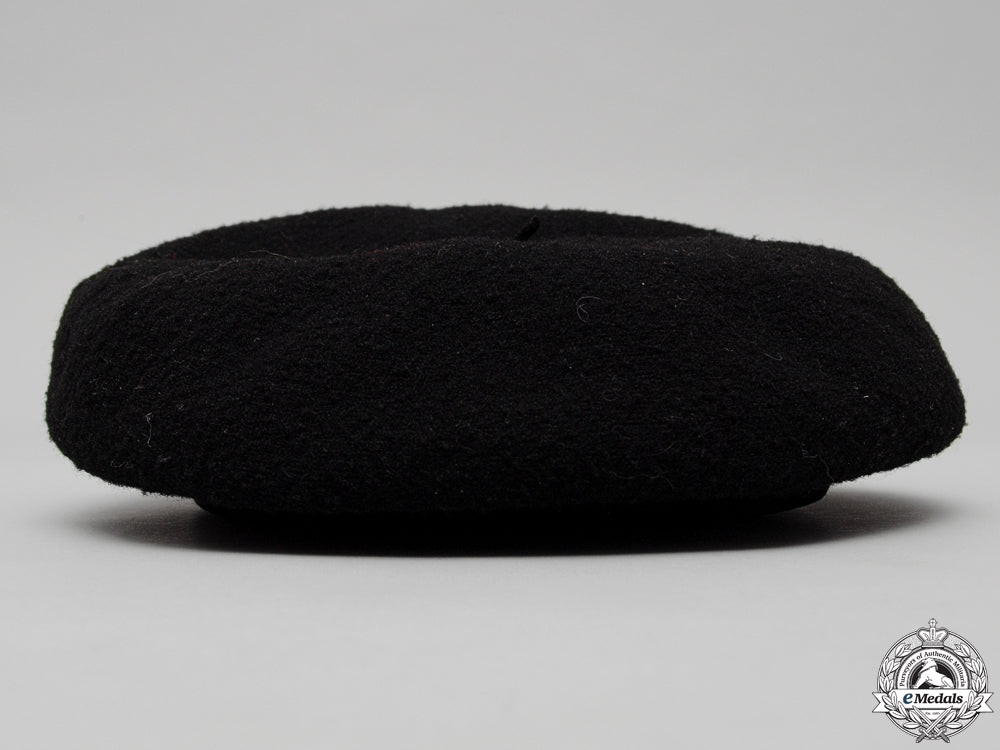
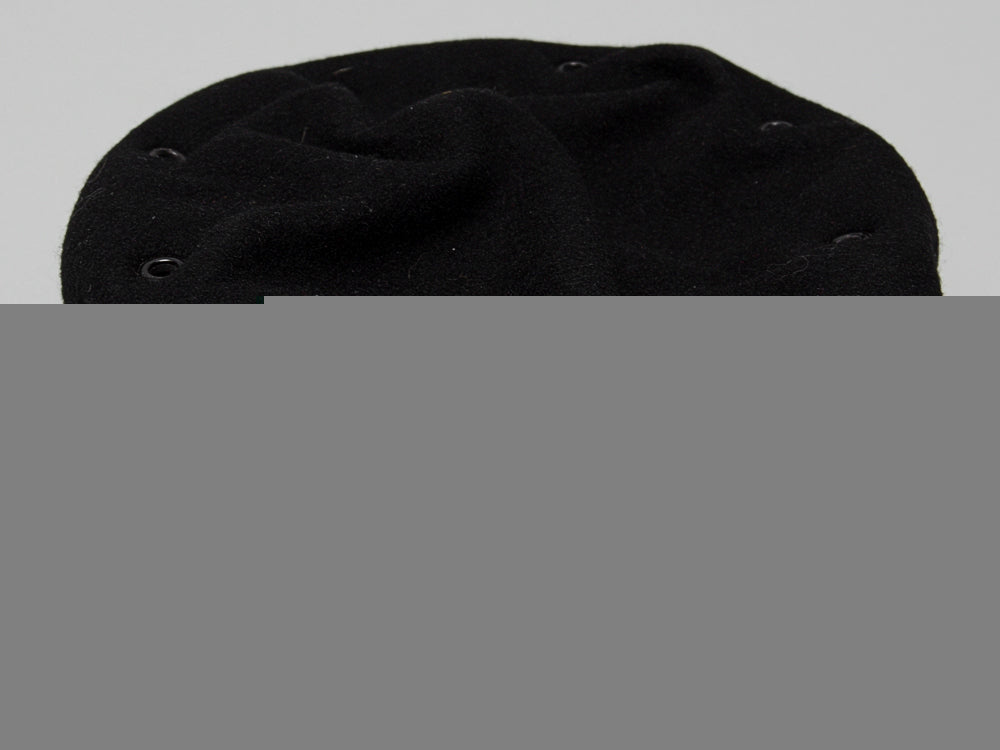
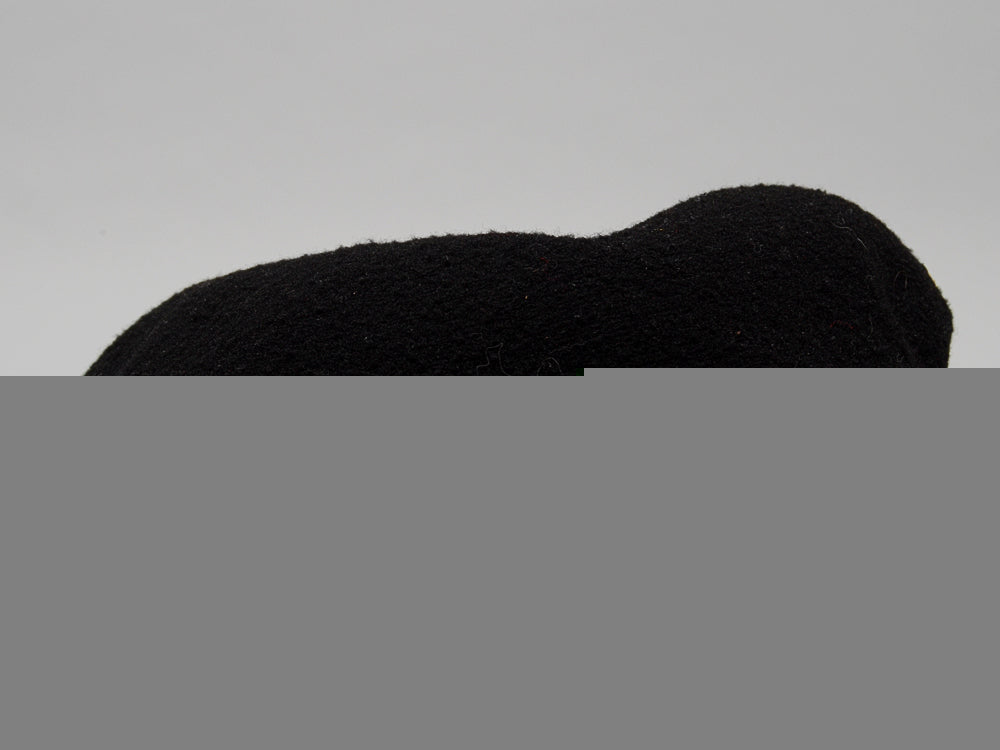
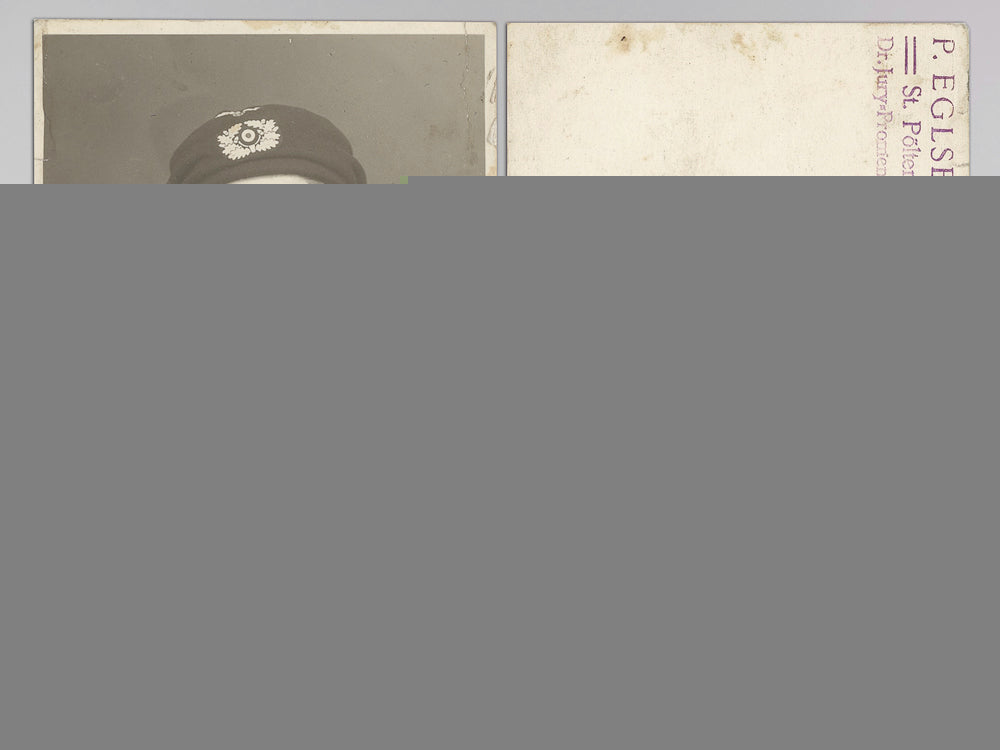
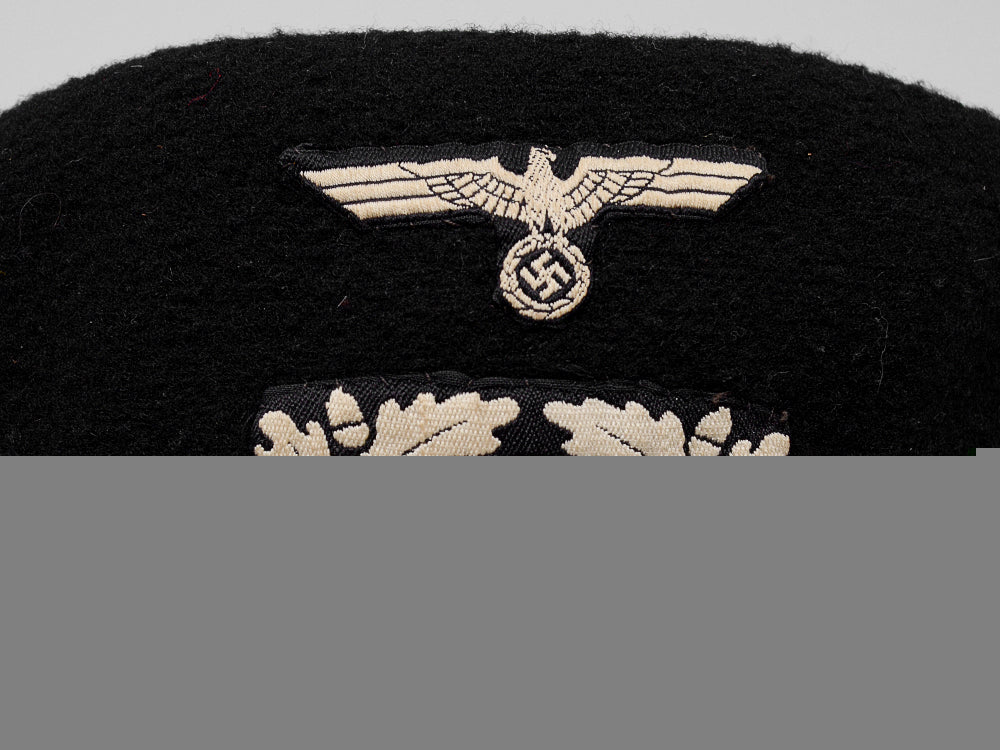
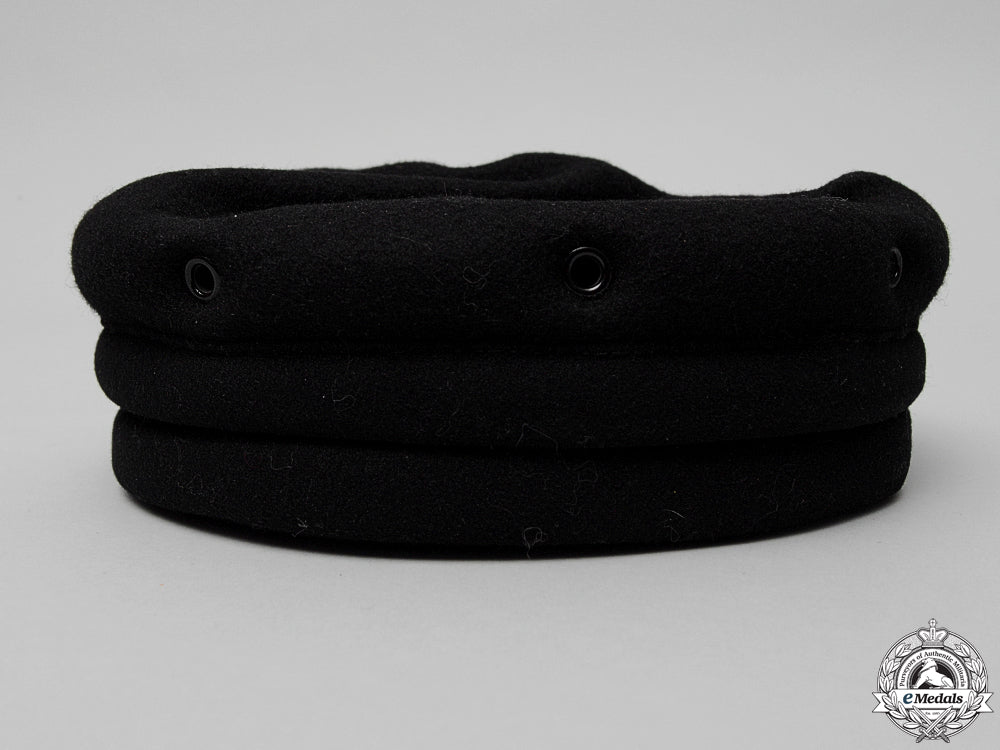
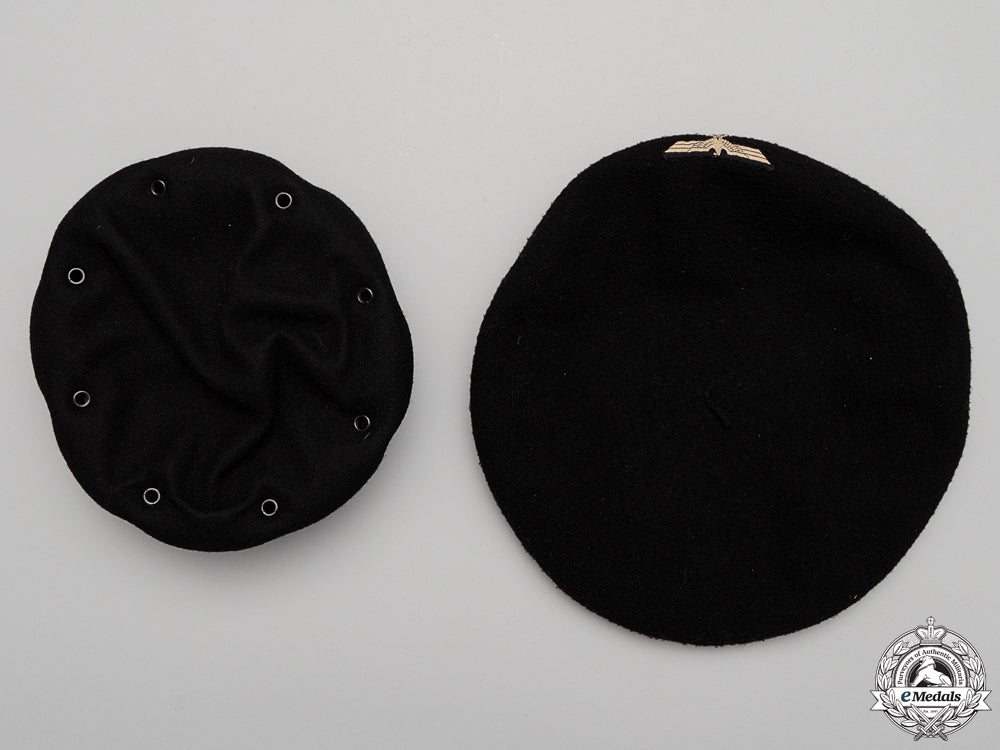
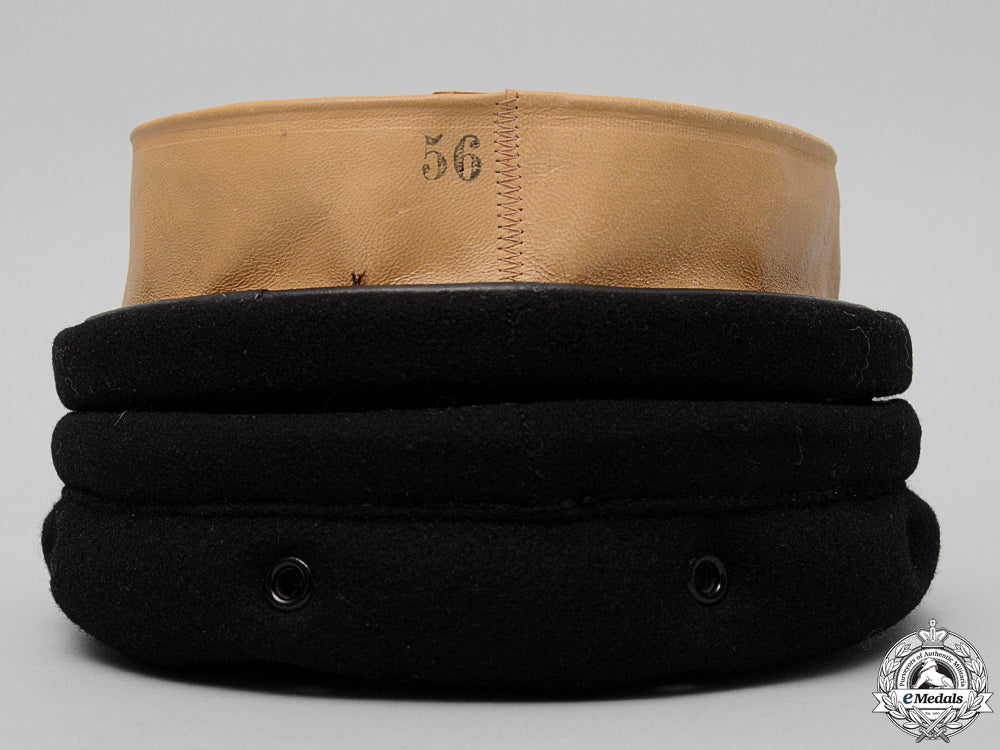
An Very Early & Extremely Rare Em/Nco's Black Panzer Beret (Schutzmütze)
An Very Early & Extremely Rare Em/Nco's Black Panzer Beret (Schutzmütze)
SKU: ITEM: G20083
Current Bid:
Your Max Bid:
Bid History:
Time Remaining:
Couldn't load pickup availability
Shipping Details
Shipping Details
eMedals offers rapid domestic and international shipping. Orders received prior to 12:00pm (EST) will be shipped on the same business day.* Orders placed on Canadian Federal holidays will be dispatched the subsequent business day. Courier tracking numbers are provided for all shipments. All items purchased from eMedals can be returned for a full monetary refund or merchandise credit, providing the criteria presented in our Terms & Conditions are met. *Please note that the addition of a COA may impact dispatch time.
Shipping Details
eMedals offers rapid domestic and international shipping. Orders received prior to 12:00pm (EST) will be shipped on the same business day.* Orders placed on Canadian Federal holidays will be dispatched the subsequent business day. Courier tracking numbers are provided for all shipments. All items purchased from eMedals can be returned for a full monetary refund or merchandise credit, providing the criteria presented in our Terms & Conditions are met. *Please note that the addition of a COA may impact dispatch time.
Description
Description
This beret consists of two pieces: a crash helmet, which served to protect the heads of the panzer crew from injuries sustained when the vehicle was motoring over rough terrain, and a cover. The crash helmet is round-shaped, constructed with approximately 50 mm wide, reinforced, heavily padded band; the exterior and rolls covered in machine spun black wool. The indentation between the two rolls acts as a receiver for the elastic band on the covering beret, ensuring a secure fit.
There are eight evenly spaced grommets placed around the circumference of the crash helmet, and nine evenly spaced grommets placed on top around the edges; the grommets are used for ventilation, and are constructed of black bakelite. There is a 47mm wide tan leather sweatband stitched in place, stamped "56" on the inside; the backside of leather sweatband is marked "81" and "8./Pz.R.2".
Interior of beret is constructed of padded black artificial silk, marked in silvery letters by the maker ""Robert Lubstein Berlin N.W. 21 Alt-Moabit 105".
This very early beret (circa 1935) shows hardly any wear, in near mint condition, and is extremely rare.
The covering beret also in machine spun black wool, it's lappet (pompom) on top intact, with an underlying elastic sewn in place at the opening, enabling the beret to be secured to the crash helmet. The front has two machine woven insignias sewn in place: a white embroidered right-facing National eagle standing upon a wreathed swastika, on a black wool base, above an embroidered wreathed National cockade illustrating a red, white and black cockade surrounded by an open-ended wreath of oak leafs and acorns. The beret and crash helmet measure approximately 220mm x 230 mm x 120 mm in height when placed together. The black wool covering on the crash helmet and beret is without interruptions in the fabric, exhibiting just minor wear and age.
Accompanied by a Photo of a Panzer Soldier, not related to the beret.
Footnote: The black Panzer wrap uniform was originally introduced by the army on November 12, 1934, for wear by armoured vehicle personnel and was worn throughout the war with minor modifications in 1936 and 1942. Allegedly the chief of the motorized troops, Oberst Heinz Guderian came up with the colouration and design of the form fitting uniform, which he based on a popular ski outfit of the time and black was chosen as the colour, as it help conceal the grease and grime commonly encountered by motorized personnel. The uniform consisted of a specially designed wrap tunic, pants and the distinctive black Panzer beret/crash helmet which was originally the only officially sanctioned piece of headgear to be worn with that uniform. The black Panzer beret/crash helmet consisted of a separate, removable beret fitted to an underlying, formed, protective crash helmet. Upon its introduction, the insignia for the beret was a white oak-leaf wreath and a national tri-color cockade excluding the national eagle. Regulations of October 1935 altered the wear of the insignia on the beret to include the national eagle. In 1939, the coloration of the wreath and the national eagle were altered from white to a less visible grey. The black Panzer beret proved impractical as wear of headphones was restricted and it was also considered unattractive, and uncomfortable which made it unpopular with the troops resulting in further production being halted as per regulations of January 15, 1941. By order HM 41, No. 64, dated January 15, 1941, the black panzer beret was abolished and replaced, however, it was maintained for crews of the Panzer type 38(t), of Czech manufacture, for drivers and co-drivers of armoured personnel carriers, and according to order HM 41, No. 277 dated March 7, 1941, for drivers and co-drivers of armoured tractors of the type Sd.Kfz.251. Although out of production in 1941, it continued to be worn after this date.
Description
This beret consists of two pieces: a crash helmet, which served to protect the heads of the panzer crew from injuries sustained when the vehicle was motoring over rough terrain, and a cover. The crash helmet is round-shaped, constructed with approximately 50 mm wide, reinforced, heavily padded band; the exterior and rolls covered in machine spun black wool. The indentation between the two rolls acts as a receiver for the elastic band on the covering beret, ensuring a secure fit.
There are eight evenly spaced grommets placed around the circumference of the crash helmet, and nine evenly spaced grommets placed on top around the edges; the grommets are used for ventilation, and are constructed of black bakelite. There is a 47mm wide tan leather sweatband stitched in place, stamped "56" on the inside; the backside of leather sweatband is marked "81" and "8./Pz.R.2".
Interior of beret is constructed of padded black artificial silk, marked in silvery letters by the maker ""Robert Lubstein Berlin N.W. 21 Alt-Moabit 105".
This very early beret (circa 1935) shows hardly any wear, in near mint condition, and is extremely rare.
The covering beret also in machine spun black wool, it's lappet (pompom) on top intact, with an underlying elastic sewn in place at the opening, enabling the beret to be secured to the crash helmet. The front has two machine woven insignias sewn in place: a white embroidered right-facing National eagle standing upon a wreathed swastika, on a black wool base, above an embroidered wreathed National cockade illustrating a red, white and black cockade surrounded by an open-ended wreath of oak leafs and acorns. The beret and crash helmet measure approximately 220mm x 230 mm x 120 mm in height when placed together. The black wool covering on the crash helmet and beret is without interruptions in the fabric, exhibiting just minor wear and age.
Accompanied by a Photo of a Panzer Soldier, not related to the beret.
Footnote: The black Panzer wrap uniform was originally introduced by the army on November 12, 1934, for wear by armoured vehicle personnel and was worn throughout the war with minor modifications in 1936 and 1942. Allegedly the chief of the motorized troops, Oberst Heinz Guderian came up with the colouration and design of the form fitting uniform, which he based on a popular ski outfit of the time and black was chosen as the colour, as it help conceal the grease and grime commonly encountered by motorized personnel. The uniform consisted of a specially designed wrap tunic, pants and the distinctive black Panzer beret/crash helmet which was originally the only officially sanctioned piece of headgear to be worn with that uniform. The black Panzer beret/crash helmet consisted of a separate, removable beret fitted to an underlying, formed, protective crash helmet. Upon its introduction, the insignia for the beret was a white oak-leaf wreath and a national tri-color cockade excluding the national eagle. Regulations of October 1935 altered the wear of the insignia on the beret to include the national eagle. In 1939, the coloration of the wreath and the national eagle were altered from white to a less visible grey. The black Panzer beret proved impractical as wear of headphones was restricted and it was also considered unattractive, and uncomfortable which made it unpopular with the troops resulting in further production being halted as per regulations of January 15, 1941. By order HM 41, No. 64, dated January 15, 1941, the black panzer beret was abolished and replaced, however, it was maintained for crews of the Panzer type 38(t), of Czech manufacture, for drivers and co-drivers of armoured personnel carriers, and according to order HM 41, No. 277 dated March 7, 1941, for drivers and co-drivers of armoured tractors of the type Sd.Kfz.251. Although out of production in 1941, it continued to be worn after this date.
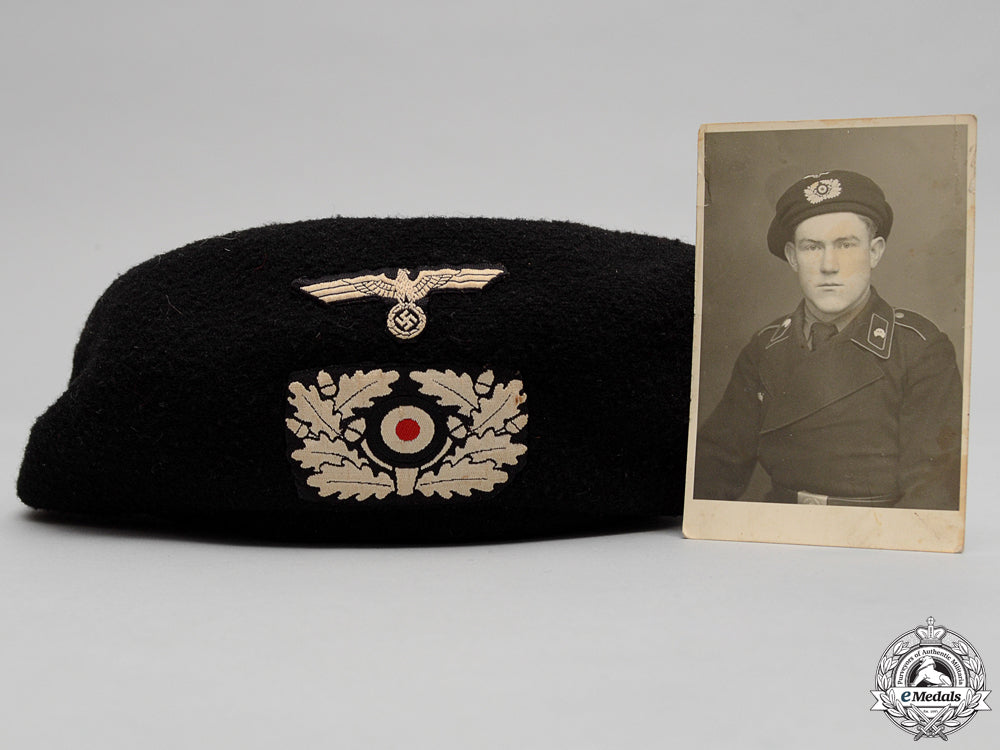
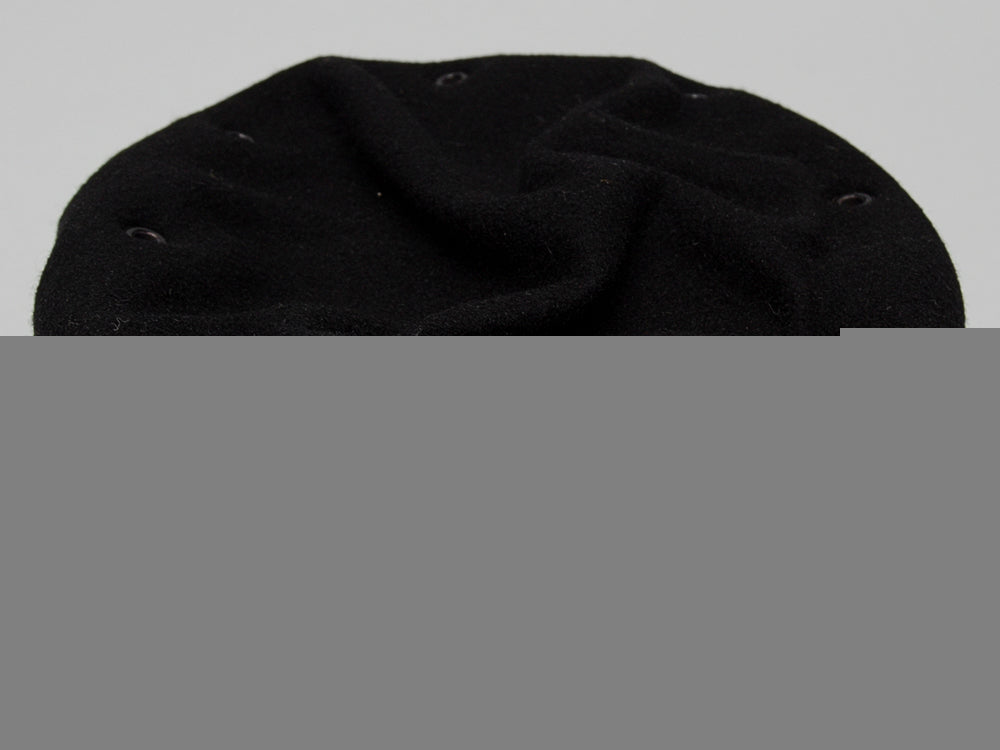
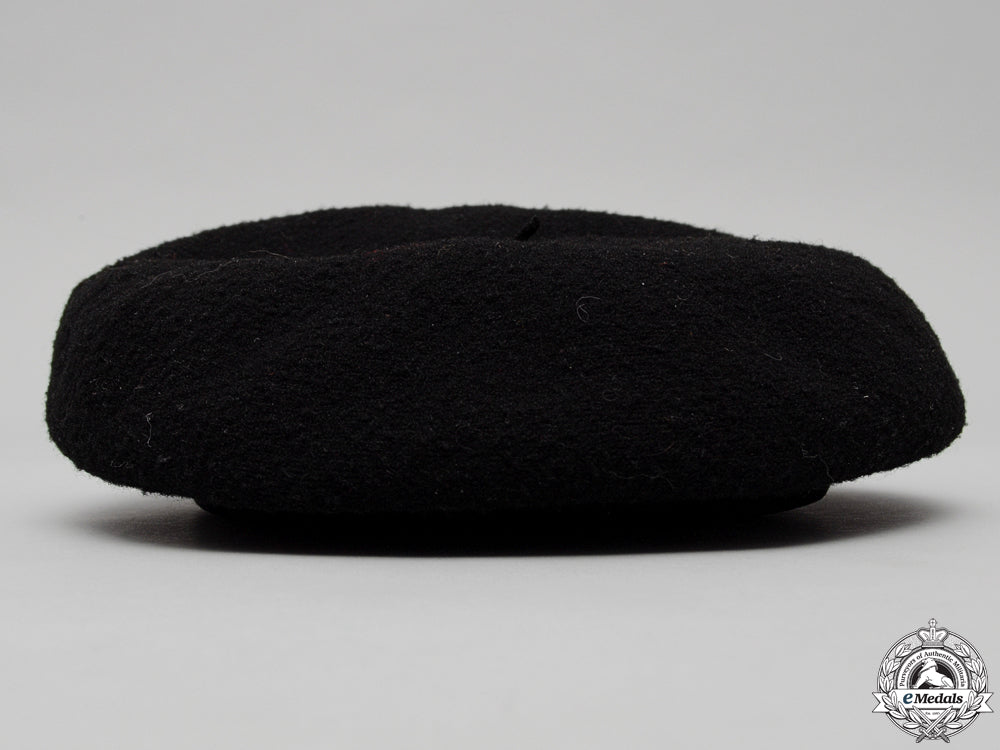
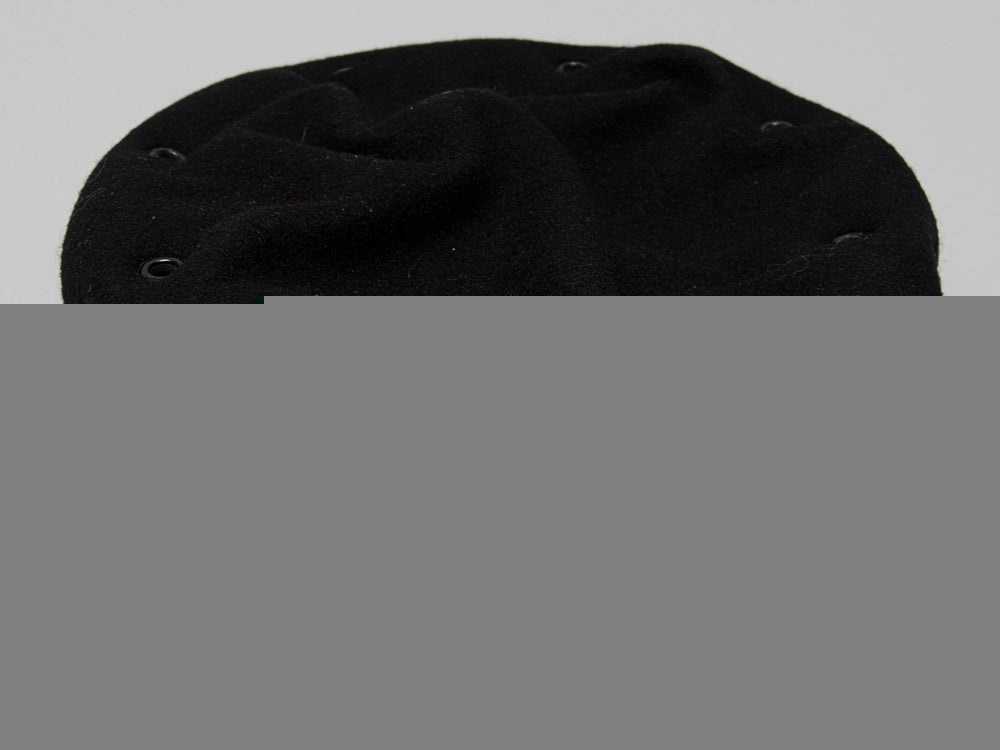
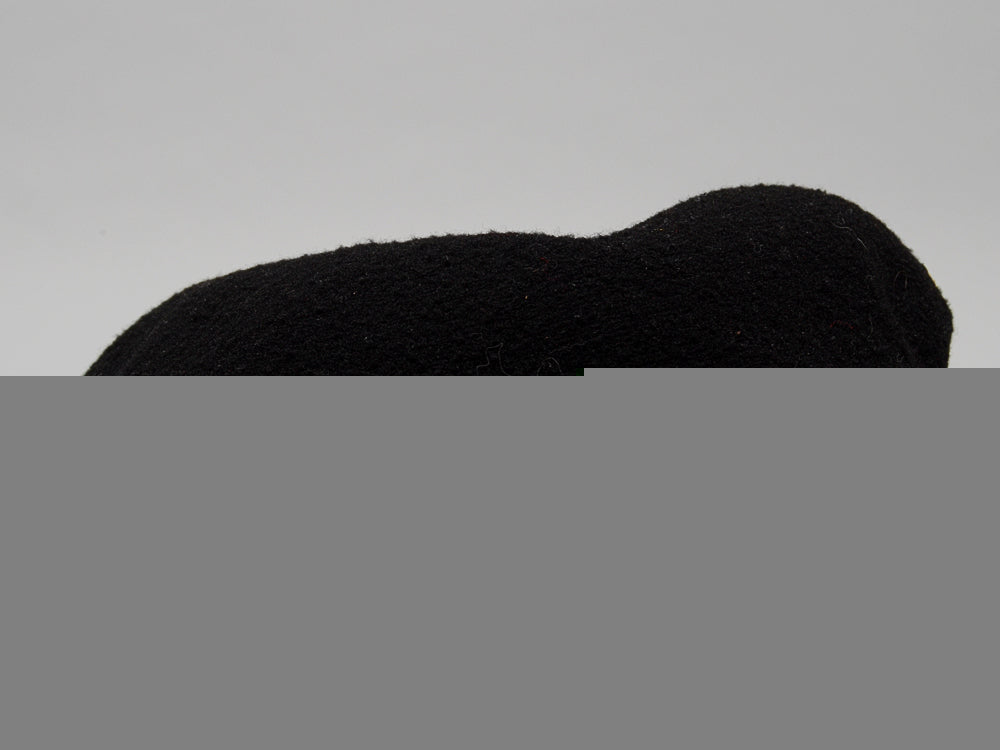
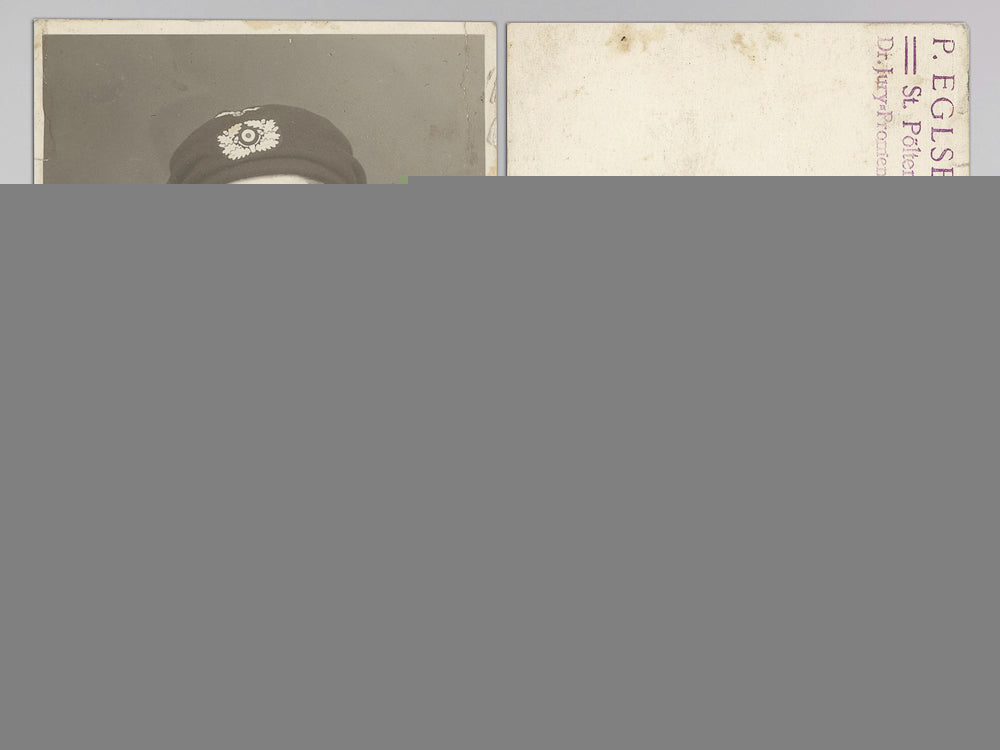
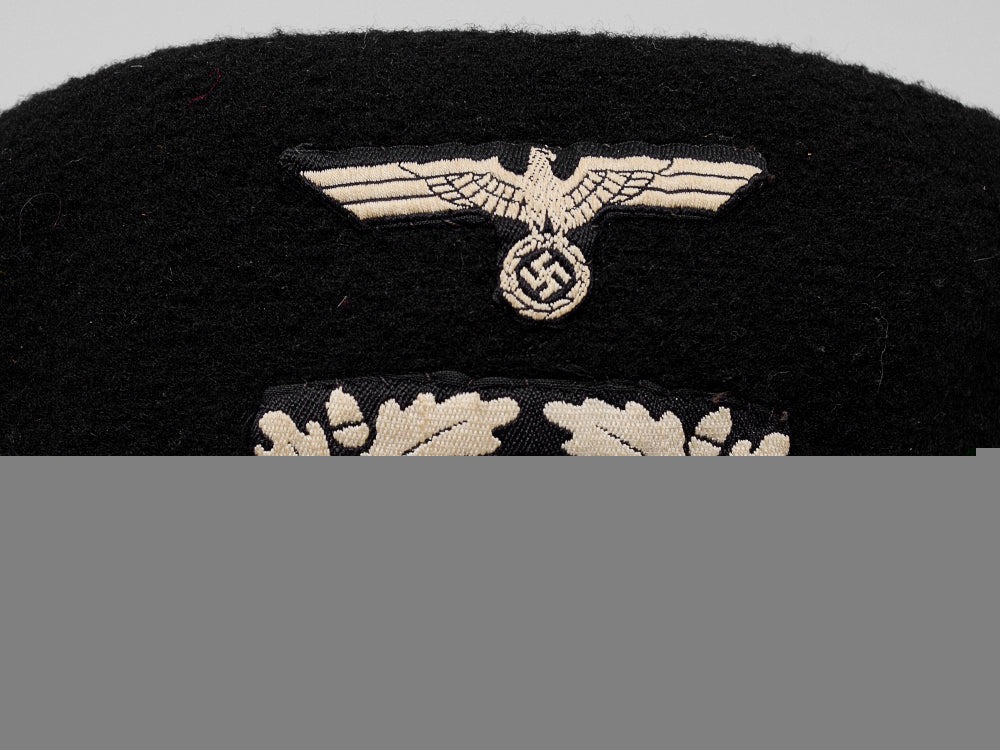
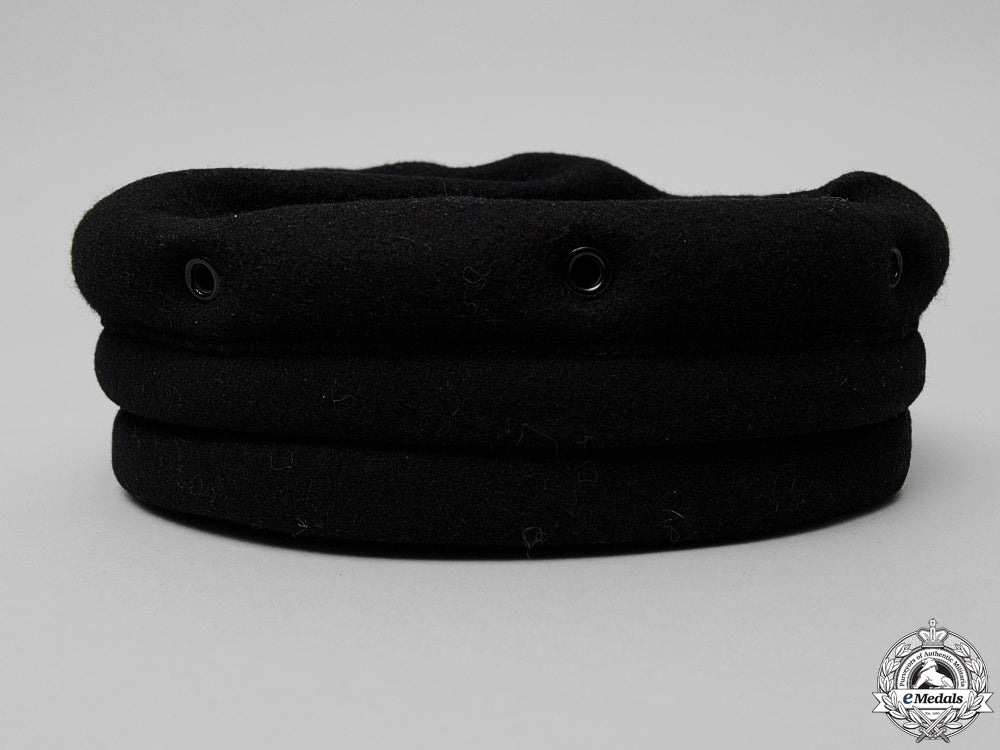
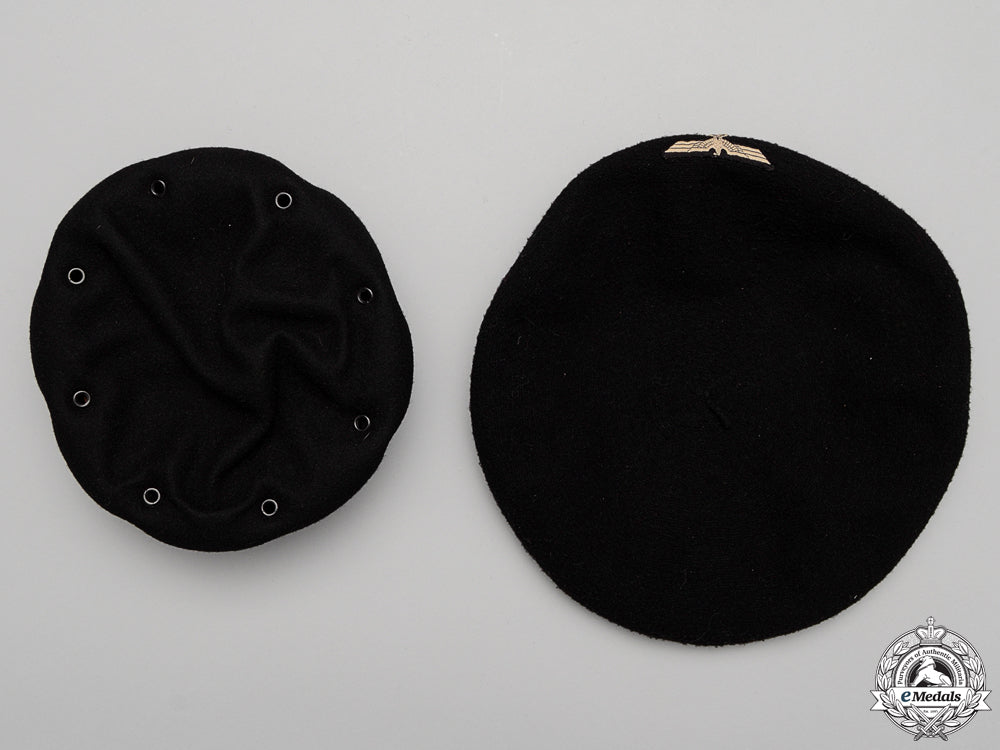
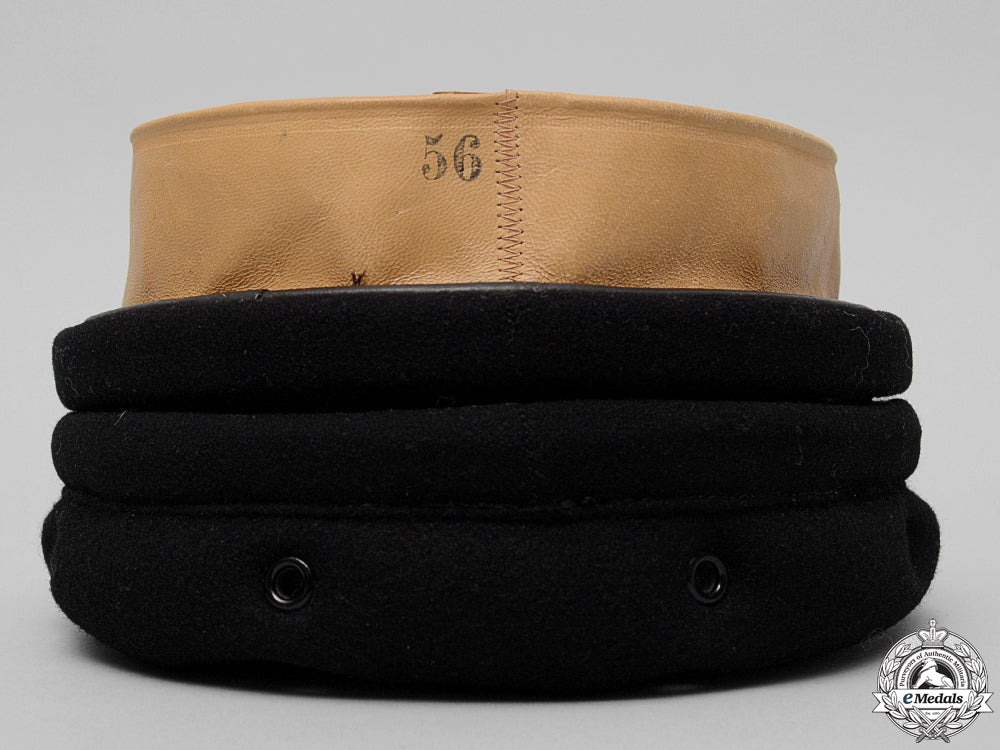
You May Also Like
eMedals Gift Card - $250
eMedals Gift Card - $500
eMedals Gift Card - $25
eMedals Gift Card - $50
Russia, Imperial. An Order of St. Vladimir, IV Class in Gold, Military Division, c.1905
EU24277
-
eMedals Gift Card - $250
Add to CartRegular price $250 USDRegular price USD Sale price $250 USDUnit price / per -
eMedals Gift Card - $500
Add to CartRegular price $500 USDRegular price USD Sale price $500 USDUnit price / per -
eMedals Gift Card - $25
Add to CartRegular price $25 USDRegular price USD Sale price $25 USDUnit price / per -
eMedals Gift Card - $50
Add to CartRegular price $50 USDRegular price USD Sale price $50 USDUnit price / per -
Russia, Imperial. An Order of St. Vladimir, IV Class in Gold, Military Division, c.1905
EU24277
Add to CartRegular price $3,450 USDRegular price $0 USD Sale price $3,450 USDUnit price / per
Do you have a similar item you are interested in selling?
Please complete the form and our client care representatives will contact you.
Sell Item